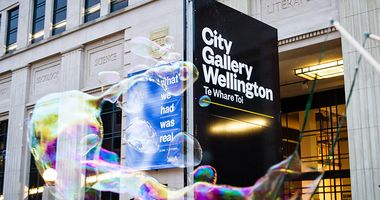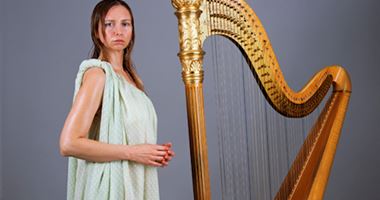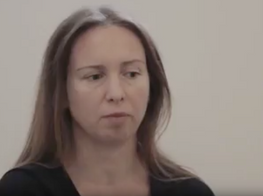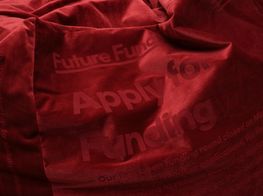Robert Leonard
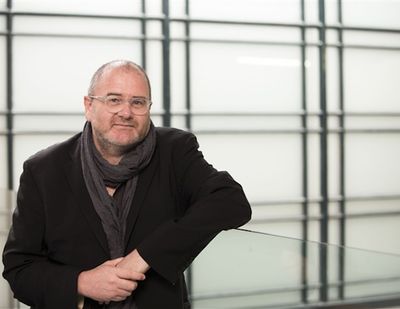
Robert Leonard is one of New Zealand's most well-respected curators of contemporary art.
Throughout the 1990s and early 2000s he produced a series of significant exhibitions at the country's leading museums, including the Govett-Brewster Art Gallery, the Dunedin Public Art Gallery and the Auckland Art Gallery.
In 2005 Leonard took up the directorship of Brisbane's Institute of Modern Art and returned to New Zealand earlier this year as Chief Curator at City Gallery Wellington.
Curators shape exhibition experiences—there's a craft element to it. Sequencing, chapterising, pacing. It's like creating a mix tape, where you intersperse anthems with ballads; electric and acoustic; moving it up a notch, then down. Counterpoint is everything. Curating is a physical, concrete activity.
KBCYou recently returned to NZ from Brisbane's IMA. Has your time away changed the way you think about New Zealand art or curating art from this country?
RLI spent eight-and-a-bit years in Australia, from late 2005 to early 2014. When I went there I thought I already knew the Australian scene rather well. But I quickly realised that I had an outsider's take on it, and that Australians similarly had outsiders' takes on New Zealand art. I saw that there was a New Zealand canon of Australian art and an Australian canon of New Zealand art.
Working in Australia gave me a sharper appreciation of how the same art can circulate simultaneously but differently in its local context and in international ones—and why. It taught me to value the nuanced village micro-discourse and the global macro-discourse equally, but also to clearly distinguish them. I came back to New Zealand because I wanted to do projects with New Zealand art that would only make sense here—projects I couldn't do anywhere else.
KBCCan you talk about your long-term approach to exhibition programming? What role do you see City Gallery playing?
RLI want the gallery to focus on bigger, more researched, more consequential shows, a lot of them dealing with local art history. I call these shows 'stews', because they take a lot of curatorial cooking. But I want to supplement them with smaller shows, quickly curated thematic sketches and solo projects that provide our audience with access to what artists are doing right now. I want both ends covered, but I don't want to confuse them—I want them to be in explicit counterpoint. Part of the trick with preparing shows is knowing how much or how little cooking they require.
KBCRecent curatorial practices have become more about making exhibitions and less about collecting. Of course, a curator might be in charge of a collection and carefully weighing acquisitions, but they might also be concerned with making connections outside of the institution; bringing artists, art practices and works together; making selections and creating insightful combinations. You could say that once curating was introverted and now it is extroverted...
RLSure, these days curating is show business. But I'm not so sure that shows today are that curatorially extroverted. I don't see many shows where curators take the lead, where they foreground themselves. Many curators are slaves to their directors, to artists, or both. While I was in Australia, I was surprised by how many big museum shows were conceptualised and driven by directors, with curators (often teams of them) simply tasked to deliver them. On the other hand, with the solo shows with major artists, the artists tended to have veto over everything, so curators didn't enjoy much freedom there either. I worry that the idea of curators as authors has been downgraded. I'd like to see more extroverted curating.
KBCWhen you set out to be a curator, what influences and pressures shaped you?
RLI trained as an intern at the National Art Gallery in Wellington in 1985. There, I worked a lot with the collection. I didn't have much to do with artists. There was freedom in that. I could take liberties—I could juxtapose works in ways the artists wouldn't have approved of—because the Gallery owned the work. I could play. Later, when I was running Artspace, I was mostly doing solo shows with artists.
There, I was more of a collaborator or enabler for the artists, partly because they were supplying the work. That was interesting too—a different aspect of curatorial enquiry. But, what you call 'extroverted' curating I associate with a collections-based approach. Extrovert curating can only happen when works leave the artist's control and when curators aren't beholden to other agendas.
KBCCity Gallery is a non-collecting institution, but you have previously worked with large collections. Do you miss working with a collection or having the responsibility for history that it brings?
RLIn my exhibition making, I'm always working with collections—other institutions' collections. At City Gallery, everything is borrowed. I feel sorry for art-museum curators who can't borrow, who are told their shows must be 'from the collection'. They may have great collections, but even a great collection is limiting. You jump through hoops looking for new ways to rearrange the same things in conversations with one another, but never in conversations with anything else.
KBCAny thoughts on the relationship a non-collecting institution has to the production of history?
RLWith big museums, their collections tend to be the focus of their legacies. For non-collecting galleries, it's publications. They are the trace of what's been done—without publishing, exhibitions are quickly forgotten. City Gallery has always done a lot of publishing. I'm keen to continue. I love publishing.
I like the idea of the curator as party liaison: bringing together particular artworks and particular audiences, creating occasions. There is a slutty, impresario aspect to it. Curators are often cast as autistic pointy-heads, concerned with the art and artists rather than the audience, but, in my experience, that's totally untrue. Curators curate audiences as much as art. It's a social thing.
KBCI often wonder if a curator's job is not one of picking trends or delineating themes, but one of scale—deciding when things should be large or small, loud or quiet, where and how emphasis should be laid. Does this hold true for you?
RLAbsolutely. Curators shape exhibition experiences—there's a craft element to it. Sequencing, chapterising, pacing. It's like creating a mix tape, where you intersperse anthems with ballads; electric and acoustic; moving it up a notch, then down. Counterpoint is everything. Curating is a physical, concrete activity. It's about arranging actual things in space and time (gallery space and viewer time), and it's about logistics and money. You're seldom curating your dream show. You're curating what you can get your hands on.
If you are doing an art-history lecture, you can always include slides of Duchamp's Fountain and Malevich's Black Square. But, as a curator, you have to access actual works, and you are going to find it hard to borrow Fountain and_Black Square_ for your show, even if they are essential to your thesis. Political, practical, and financial constraints force curators to be creative and opportunistic in ways that art historians seldom need to be.
KBCHow would you describe what you do as a curator?
RLCurating has become cool, and, consequently, the term is much abused. The idea has become inseparable from the internet-age phenomenon of aggregation. We hear of people 'curating' shop windows, fashion shows, their websites, dinners, and parties. But actually, I like the idea of the curator as party liaison: bringing together particular artworks and particular audiences, creating occasions. There is a slutty, impresario aspect to it. Curators are often cast as autistic pointy-heads, concerned with the art and artists rather than the audience, but, in my experience, that's totally untrue. Curators curate audiences as much as art. It's a social thing.
KBCCan you tell us about what you have coming up, what you're excited about?
RLI'm working on a massive Yvonne Todd survey show that opens in December. Creamy Psychology will fill the entire gallery. It's an experiment. The scale is a risk, because the show will have to sustain viewer attention without seeming repetitive—and there's nothing else on. We haven't spread our bets this time.
KBCYou are the curator for next year's NZ pavilion at Venice, working with Simon Denny. Can you talk about your role as curator there? Why is it important to have a curator for a solo show or a singular project such as this?
RLWith Venice, you could argue that a curator isn't absolutely necessary. In 2011 Michael Parekowhai made that call and went without. But I thought that was a shame, because it is a great experience for a curator, and curators need these opportunities too. But yes, Venice is an artist-led project. As curator, I'm there to assist the artist, to be a sounding board and to ride shotgun—to do what needs to be done. I'm not there to be an extrovert curator. Much of the job is insulation, sitting between the artist and other agencies, being the Babel fish.
I did Venice once before. In 2003, I was co-curator of Michael Stevenson's This Is the Trekka. I had never been to the Biennale before and it was only New Zealand's second time. Back then, neither I nor Creative New Zealand knew what the curator's role could really be. Now, we both have more Venice miles under our belts. I know how it works, so I can be more help. And Denny's project Secret Power is bigger than Ben Hur, so there will be no idle hands. I'm grateful to get a second go. —[O]


